- Choosing the Right Geranium for Your Home
- Consider the Growing Conditions
- Decide on the Type of Geranium
- Think about Your Maintenance Level
- Consider Your Color Preferences
- Visit a Local Nursery
- The Best Location for Geraniums’ Growth
- Sunlight
- Temperature
- Air Circulation
- Soil
- Protection
- Conclusion
- Watering Geraniums: Dos and Don’ts
- Do’s:
- Don’ts:
- Fertilizing Geraniums for Optimal Health
- 1. Choose the Right Fertilizer
- 2. Fertilize Regularly
- 3. Apply the Fertilizer Properly
- 4. Adjust Fertilization Based on Plant Needs
- 5. Use Organic Alternatives
- 6. Avoid Overfertilization
- Pruning Geraniums: A Guide to Maintenance
- 1. Tools Needed
- 2. When to Prune Geraniums
- 3. Pruning Dead Growth
- 4. Shaping the Plant
- 5. Pinching Back
- 6. Regular Maintenance Pruning
- 7. Disinfecting Pruning Tools
- 8. Disposing of Pruned Material
- Controlling Pests and Diseases in Geraniums
- Common Pests:
- Common Diseases:
- Overwintering Geraniums: Tips for Survival
- 1. Prepare your geraniums for winter
- 2. Bring geraniums indoors
- 3. Store geraniums dormant
- 4. Check on your geraniums regularly
- 5. Replant geraniums in the spring
- Propagating Geraniums: How to Multiply Your Plants
- 1. Gather the Necessary Supplies
- 2. Choose the Right Method
- 3. Take Stem Cuttings
- 4. Care for Your New Plants
- 5. Experiment with Other Methods
- Q&A:
- How often should I water my geraniums?
- Can geraniums be grown indoors?
- How do I deadhead geraniums?
- Do geraniums need fertilization?
- What are some common pest problems for geraniums?
- Why are the leaves of my geranium turning yellow?
- Can geraniums tolerate cold temperatures?
- Video: How to grow Geranium Flowers in Pots | From Plantation of Saplings to Full Bloom – Complete Guide
Geraniums, also known as pelargoniums, are popular flowering plants that are commonly found in home gardens. They are loved for their vibrant flowers, attractive foliage, and easy care requirements. Whether you are a beginner gardener or an experienced plant enthusiast, geraniums can be a great addition to your collection.
One of the essential tips for caring for geraniums is to provide them with the right amount of sunlight. These plants thrive in full sun conditions, so it is important to place them in a location where they can receive at least six hours of direct sunlight daily. Lack of sunlight can result in weak growth and fewer blooms.
Another crucial aspect of geranium care is proper watering. These plants prefer well-draining soil, so avoid overwatering them as it can lead to root rot. Instead, water them when the top inch of soil feels dry to the touch. Additionally, it is best to water geraniums in the morning to allow any excess moisture to evaporate before nightfall.
Fertilizing geraniums is another important task to ensure their healthy growth. Use a balanced, water-soluble fertilizer every four to six weeks during the growing season. This will provide the necessary nutrients for the plants to produce abundant, colorful blooms. Be cautious not to over-fertilize, as it can lead to excessive foliage growth at the expense of flowers.
In conclusion, geraniums are beautiful and versatile plants that can thrive in home gardens with proper care and maintenance. By providing them with adequate sunlight, proper watering, and regular fertilizer application, you can enjoy their vibrant blooms all season long. With these essential tips, you can ensure your geraniums stay healthy and add a touch of color to your indoor or outdoor spaces.
Choosing the Right Geranium for Your Home
Geraniums are popular flowering plants that can brighten up any home or garden. With so many different varieties to choose from, it can be overwhelming to find the right geranium for your specific needs. Here are some tips to help you make the right decision:
Consider the Growing Conditions
Before choosing a geranium, it’s important to consider the growing conditions in your home. Geraniums thrive in full sun, so if you have a sunny window or a well-lit balcony, you’re in luck. If you have a shady spot, there are varieties of geraniums that can tolerate some shade, such as the ivy-leaf geranium.
Decide on the Type of Geranium
Geraniums come in different types, each with its own unique characteristics. Common types include zonal geraniums, ivy-leaf geraniums, scented geraniums, and regal geraniums. Zonal geraniums are known for their showy flowers and vibrant colors, while ivy-leaf geraniums have trailing vines and are great for hanging baskets or window boxes. Scented geraniums have fragrant leaves, and regal geraniums have large, ruffled flowers.
Think about Your Maintenance Level
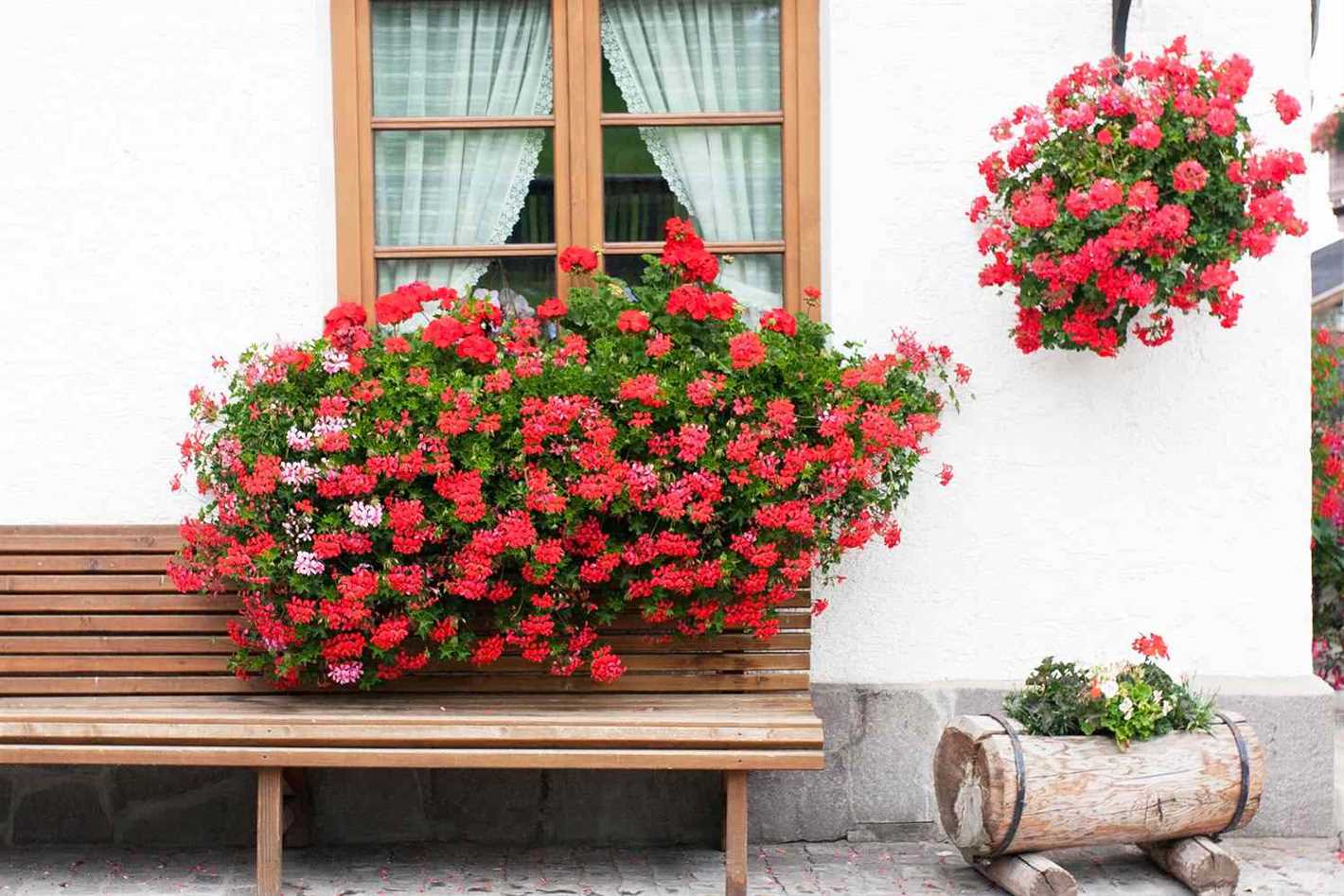
Some geraniums require more maintenance than others. If you’re a beginner or prefer low-maintenance plants, look for varieties that are known for their durability and ability to withstand neglect. Zonal geraniums are a popular choice for beginners because they are relatively easy to care for and can tolerate some neglect.
Consider Your Color Preferences
Geraniums come in a wide range of colors, including red, pink, white, and purple. Consider the color scheme of your home or garden and choose a geranium that complements it. If you can’t decide on just one color, mix different varieties together for a vibrant and colorful display.
Visit a Local Nursery
Lastly, to make the best decision, visit a local nursery. Talk to the experts and see the geraniums in person. They can provide advice based on your specific needs and help you choose the right geranium for your home.
By considering the growing conditions, the type of geranium, your maintenance level, and your color preferences, you’ll be able to choose the right geranium that will thrive in your home and bring beauty and joy to your space.
The Best Location for Geraniums’ Growth
When it comes to growing geraniums, choosing the right location is crucial for their healthy development. Geraniums thrive in specific conditions, and finding the perfect spot for them can significantly improve their growth and overall appearance.
Sunlight
Geraniums are sun-loving plants and require at least six hours of direct sunlight every day to grow properly. Place them in a location where they can receive ample sunlight, such as a south-facing window or a spot in your garden that gets plenty of sunshine.
Temperature
Geraniums prefer moderate temperatures between 60°F and 75°F (15°C-24°C). They can tolerate slightly cooler temperatures at night, but prolonged exposure to extreme heat or frost can damage them. To ensure their well-being, keep them away from drafty areas, air-conditioning vents, and windows that let in cold drafts.
Air Circulation
Good air circulation is essential for the health of geraniums. Stagnant air can lead to fungal diseases and pest infestations. Avoid placing geraniums in cramped spaces or where air movement is limited. Instead, choose a location that allows for proper air circulation.
Soil
Geraniums prefer well-draining soil that is slightly acidic with a pH between 6.0 and 7.0. Avoid heavy clay soils that retain water, as that can lead to root rot. Use a high-quality potting mix or amend your garden soil with compost to improve drainage.
Protection
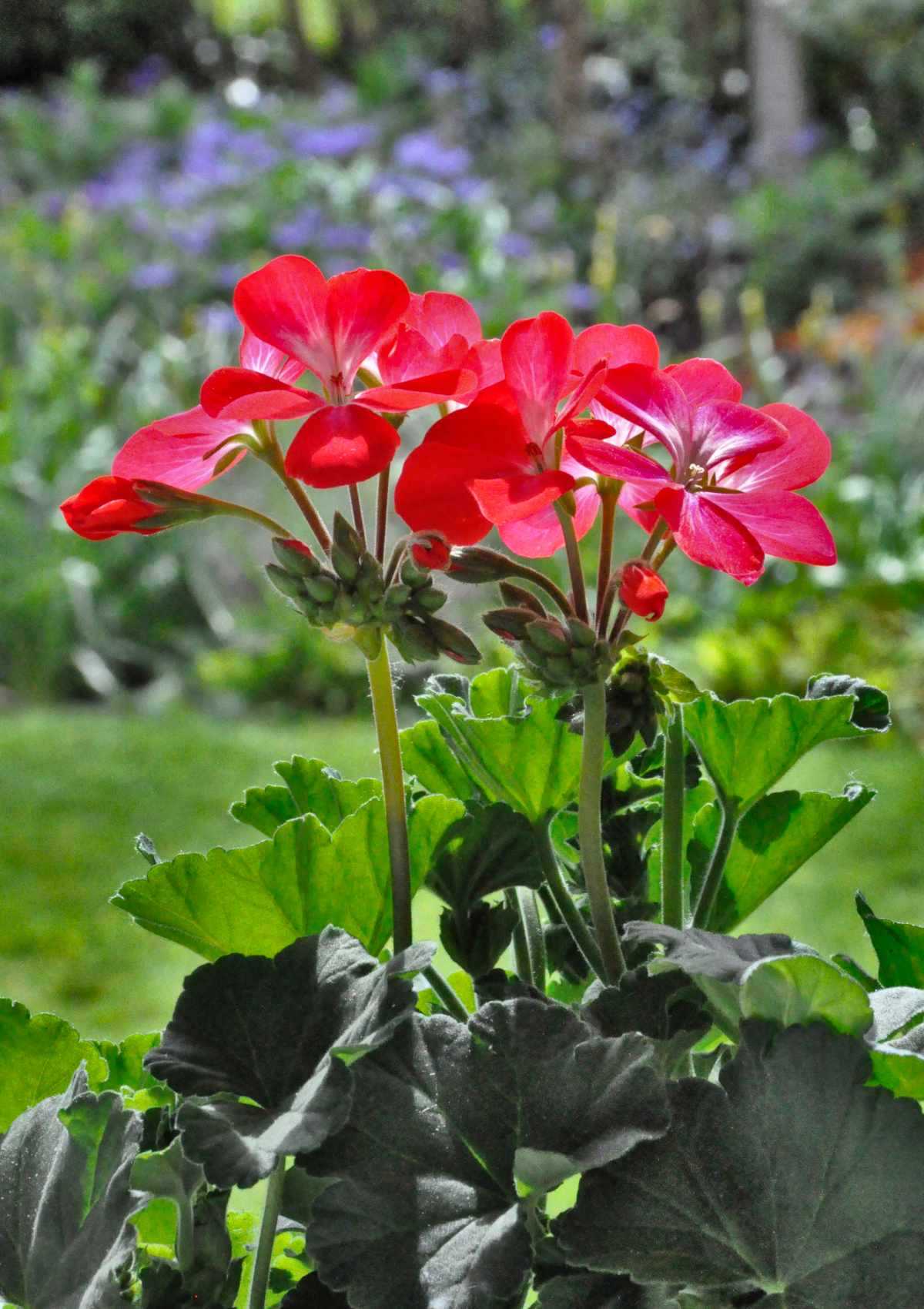
While geraniums love sunlight, they can benefit from some protection during the hottest part of the day, especially in regions with scorching summers. If you’re planting them in your garden, consider placing them in a spot that offers partial shade during the peak hours of sun exposure.
Conclusion
By choosing the right location for your geraniums, you can create an ideal environment for their growth. Make sure they receive ample sunlight, moderate temperatures, good air circulation, and well-draining soil. With proper care and attention to their location, your geraniums will thrive and reward you with beautiful blooms.
Watering Geraniums: Dos and Don’ts
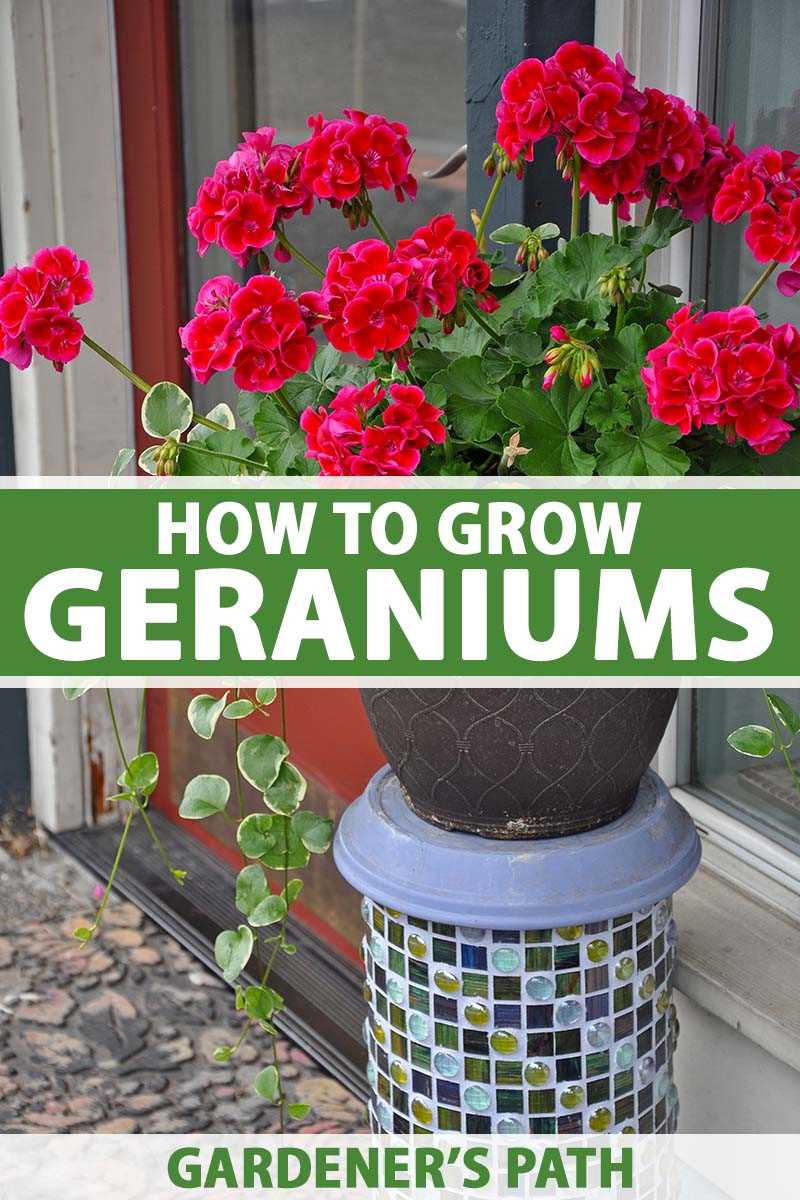
Do’s:
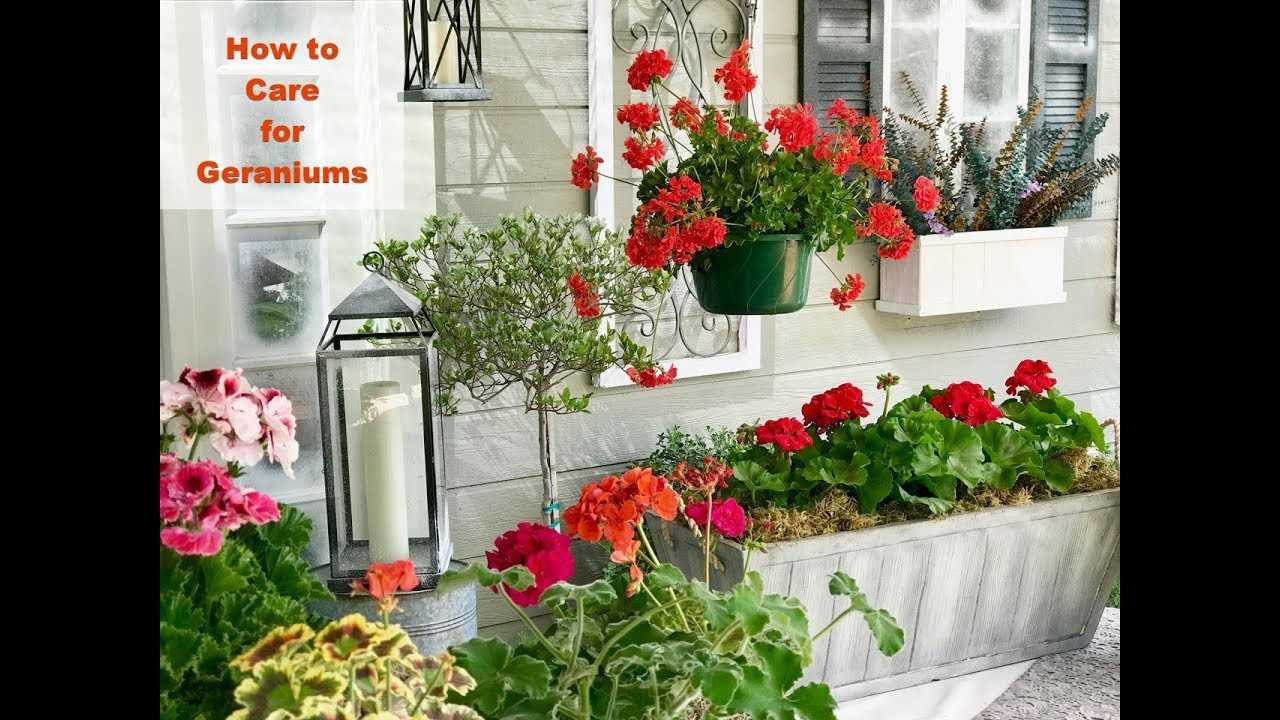
- Water early in the day: It is best to water geraniums in the morning to allow time for any excess moisture to evaporate during the day, reducing the risk of disease.
- Use well-draining soil: Geraniums prefer soil that drains well to prevent waterlogged roots. Use a potting mix that is specifically designed for geraniums or add perlite or sand to improve drainage.
- Water deeply: When watering geraniums, make sure to soak the soil thoroughly. This encourages deep root growth and helps the plant withstand periods of drought.
- Check soil moisture: Before watering, check the moisture level of the soil by sticking your finger about an inch deep into the soil. Water only if the soil feels dry at this depth.
- Water at the base: Avoid watering the foliage of geraniums, as this can promote fungal diseases. Instead, water at the base of the plant to ensure the roots receive the moisture they need.
- Use room temperature water: Geraniums prefer lukewarm or room temperature water. Cold water can shock the roots and hinder the plant’s growth.
Don’ts:
- Don’t overwater: Overwatering can lead to root rot and other fungal diseases. Avoid keeping the soil constantly wet or waterlogged.
- Don’t let water sit in saucers: Remove any excess water that collects in the saucer or tray beneath the pot. Standing water can cause root rot.
- Don’t water on a schedule: Adjust your watering frequency based on the needs of your geraniums and the moisture level of the soil. Avoid watering on a set schedule.
- Don’t water from above: Wetting the foliage of geraniums can increase the risk of disease. Water at the base of the plant instead.
- Don’t rely on rainfall alone: While geraniums appreciate rainwater, it may not be sufficient to meet their moisture needs. Check the soil regularly and water as needed.
Following these watering tips will help ensure that your geraniums receive the right amount of moisture for healthy growth and blooming. Remember to observe your plants closely and adjust your watering routine as needed.
Fertilizing Geraniums for Optimal Health
Proper fertilization is crucial for promoting the optimal growth and health of geranium plants. Fertilizers provide essential nutrients that geraniums need to thrive and produce beautiful blooms. Here are some tips for fertilizing geraniums:
1. Choose the Right Fertilizer
When selecting a fertilizer for your geraniums, opt for a balanced formula that contains equal amounts of nitrogen (N), phosphorus (P), and potassium (K). Look for a fertilizer with an NPK ratio of 10-10-10 or 20-20-20. This balanced formula will provide a good mix of nutrients to support overall plant growth and flower production.
2. Fertilize Regularly
Geraniums benefit from regular fertilization throughout the growing season. Start fertilizing your geraniums in early spring after the last frost and continue every 4-6 weeks until late summer or early fall. This regular feeding schedule will provide a steady supply of nutrients for the plants to use as they grow and bloom.
3. Apply the Fertilizer Properly
Follow the instructions on the fertilizer packaging for the recommended application rates. Generally, it’s best to apply the fertilizer evenly around the base of the plant, avoiding direct contact with the leaves or stems. Water the plants well after fertilizing to help the nutrients penetrate the soil and reach the roots.
4. Adjust Fertilization Based on Plant Needs
Pay attention to the specific needs of your geranium plants and adjust the fertilization accordingly. If your geraniums are not blooming well, you may need to increase the frequency or strength of the fertilizer. On the other hand, if your plants are showing signs of nutrient burn or excessive growth, you may need to decrease the amount of fertilizer or dilute it more.
5. Use Organic Alternatives
If you prefer organic gardening methods, there are several organic alternatives to synthetic fertilizers. Compost, worm castings, and well-rotted manure can all be used to provide nutrients to geranium plants. These organic fertilizers release nutrients slowly over time and also improve soil fertility.
6. Avoid Overfertilization
While fertilizing is important, it’s crucial not to overdo it. Overfertilization can lead to salt build-up in the soil, causing root burn and other plant problems. Always follow the recommended application rates and avoid fertilizing when the soil is dry or the plants are under stress.
By following these tips for fertilizing geraniums, you can ensure that your plants receive the nutrients they need to thrive and produce vibrant blooms. Remember to always monitor your plants’ response to the fertilizer and make adjustments as necessary.
Pruning Geraniums: A Guide to Maintenance
Pruning geraniums is an important aspect of their maintenance and care. Regular pruning helps to keep the plants healthy and encourages them to produce more blooms. Here are some essential tips for proper geranium pruning:
1. Tools Needed
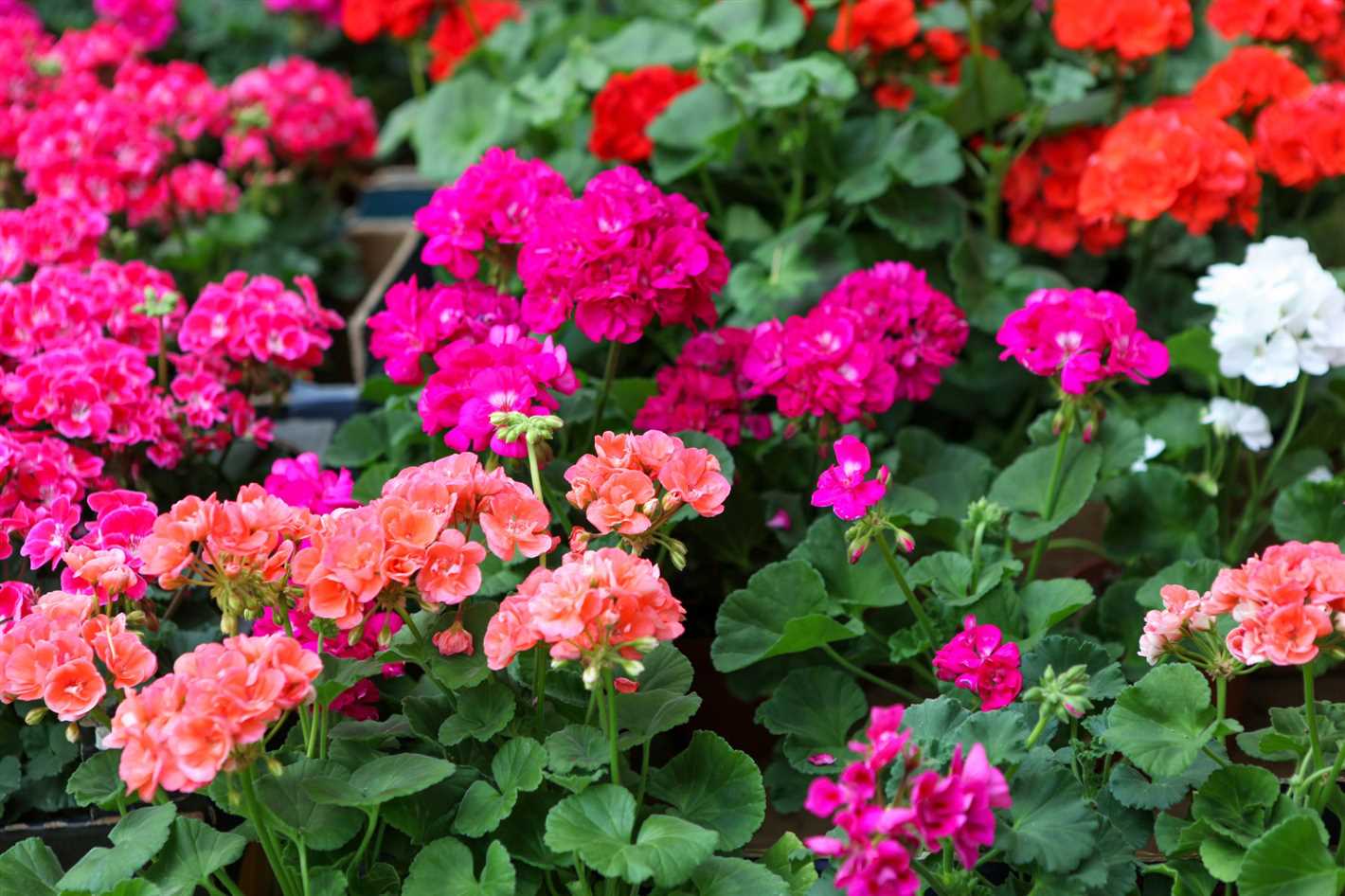
- Sharp pruning shears or scissors
- Gardening gloves
- Disinfectant (optional, for sterilizing the pruning tools)
2. When to Prune Geraniums
Geraniums should be pruned during the spring or early summer. This is the best time to remove dead or damaged growth and shape the plants for the upcoming growing season.
3. Pruning Dead Growth
Start by inspecting the geranium plant for any dead or wilted growth. Use the pruning shears to snip off these unhealthy parts, making sure to cut just above a healthy leaf or node. Removing dead growth will promote new, healthy growth.
4. Shaping the Plant
To shape the geranium plant, look for long or leggy stems. Cut these stems back by about one-third to one-half of their length, again making the cut just above a healthy leaf or node. This will help the plant grow fuller and more compact.
5. Pinching Back
Pinching back the tips of geranium stems is another important pruning technique. Use your fingertips or sharp scissors to pinch off the top inch or so of the stem. This will encourage branching and more flower production.
6. Regular Maintenance Pruning
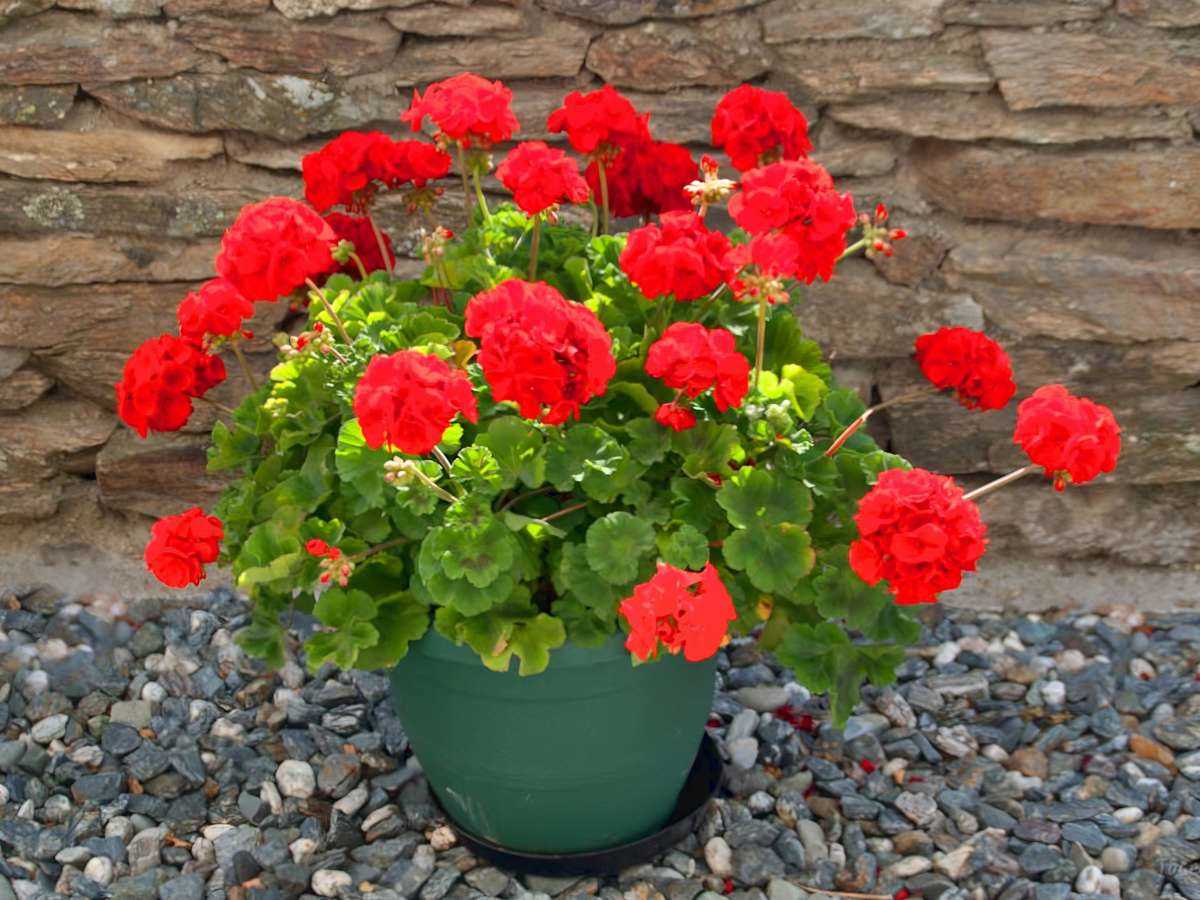
Throughout the growing season, it’s important to continue pruning geraniums to remove any spent blooms or wilted leaves. This will keep the plant looking tidy and prevent the formation of disease or pest problems.
7. Disinfecting Pruning Tools
To prevent the spread of diseases or pests, it’s a good idea to disinfect your pruning tools before and after each use. Simply soak the blades in a solution of disinfectant for a few minutes, then rinse and dry them thoroughly.
8. Disposing of Pruned Material
After pruning geraniums, be sure to dispose of the pruned material properly. Dead leaves and stems can harbor diseases or pests, so it’s best to remove them from the garden and discard them in a sealed bag or burn them.
By following these pruning tips, you can ensure that your geraniums stay healthy and vibrant, producing an abundance of beautiful blooms throughout the growing season.
Controlling Pests and Diseases in Geraniums
Geraniums are generally hardy plants, but like any other plant, they can be susceptible to pests and diseases. Fortunately, with proper care and regular monitoring, you can prevent and control these issues. Here are some tips to help you keep your geraniums healthy and thriving:
Common Pests:
- Aphids: These small, soft-bodied insects feed on the sap of geranium leaves and buds. To control aphids, you can spray a mixture of mild soap and water on the affected plants. Alternatively, you can introduce beneficial insects like ladybugs or lacewings, which feed on aphids.
- Spider Mites: Spider mites are tiny pests that can cause significant damage to geraniums. They usually leave small, yellowish dots on the leaves. To get rid of spider mites, regularly mist the leaves with water to increase humidity, or you can use insecticidal soap or neem oil.
- Whiteflies: These small, flying insects are often found on the undersides of geranium leaves. They suck the sap from the plant, causing stunted growth and yellowing of leaves. To control whiteflies, you can use yellow sticky traps or introduce natural predators like parasitic wasps.
Common Diseases:
- Botrytis Blight: Also known as gray mold, this fungal disease can cause wilting, brown spots, and fuzzy gray mold on geranium leaves and flowers. To prevent this disease, avoid overhead watering, allow good air circulation, and remove any infected plant parts. You can also apply a fungicide as a preventive measure.
- Powdery Mildew: Powdery mildew appears as a white, powdery coating on the leaves and stems of geraniums. It thrives in conditions of high humidity and low air circulation. To control powdery mildew, remove infected leaves, ensure good ventilation, and avoid overcrowding. You can also apply a fungicide labeled for powdery mildew control.
- Root Rot: Overwatering and poorly drained soil can lead to root rot in geraniums. This fungal disease causes the roots to decay, leading to wilting and yellowing of leaves. To prevent root rot, ensure proper drainage and avoid overwatering. If your geraniums already have root rot, you may need to repot them in fresh soil and cut away any affected roots.
Regularly inspect your geraniums for any signs of pests or diseases, and take prompt action to control them. Remember, prevention is always better than cure, so providing your geraniums with ideal growing conditions and proper care can help them resist pests and diseases.
Overwintering Geraniums: Tips for Survival
Overwintering geraniums is a great way to ensure that your plants survive the winter and come back strong in the spring. Geraniums, also known as pelargoniums, are tender perennials that are typically grown as annuals in colder climates. However, with proper care and protection, you can successfully overwinter geraniums and enjoy their beautiful blooms year after year.
1. Prepare your geraniums for winter
Before the first frost hits, it’s important to prepare your geraniums for winter. Start by pruning the plants back to about half of their original size. This will help reduce stress on the plants and make them more compact for overwintering. Remove any dead or diseased foliage, and inspect the plants for pests.
2. Bring geraniums indoors
If you’re growing geraniums in pots, it’s easy to bring them indoors for the winter. Choose a cool, well-lit location, such as a sunny window or a greenhouse. Keep the temperature between 45 and 55 degrees Fahrenheit (7-13 degrees Celsius) to promote dormancy. Water the plants sparingly, allowing the soil to dry out slightly between waterings.
3. Store geraniums dormant
If you have geraniums planted in the ground, you can dig them up and store them dormant for the winter. After pruning, gently lift the plants from the ground, taking care not to damage the roots. Shake off excess soil and allow the plants to dry for a few hours. Then, place the plants in a container filled with vermiculite or peat moss. Store the container in a cool, dry location, such as a basement or garage, where the temperature stays above freezing.
4. Check on your geraniums regularly
Throughout the winter, it’s important to check on your geraniums regularly. Inspect the plants for signs of pests or disease, and remove any dead or decaying foliage. Water sparingly if the plants appear dry, but be careful not to overwater, as this can lead to root rot.
5. Replant geraniums in the spring
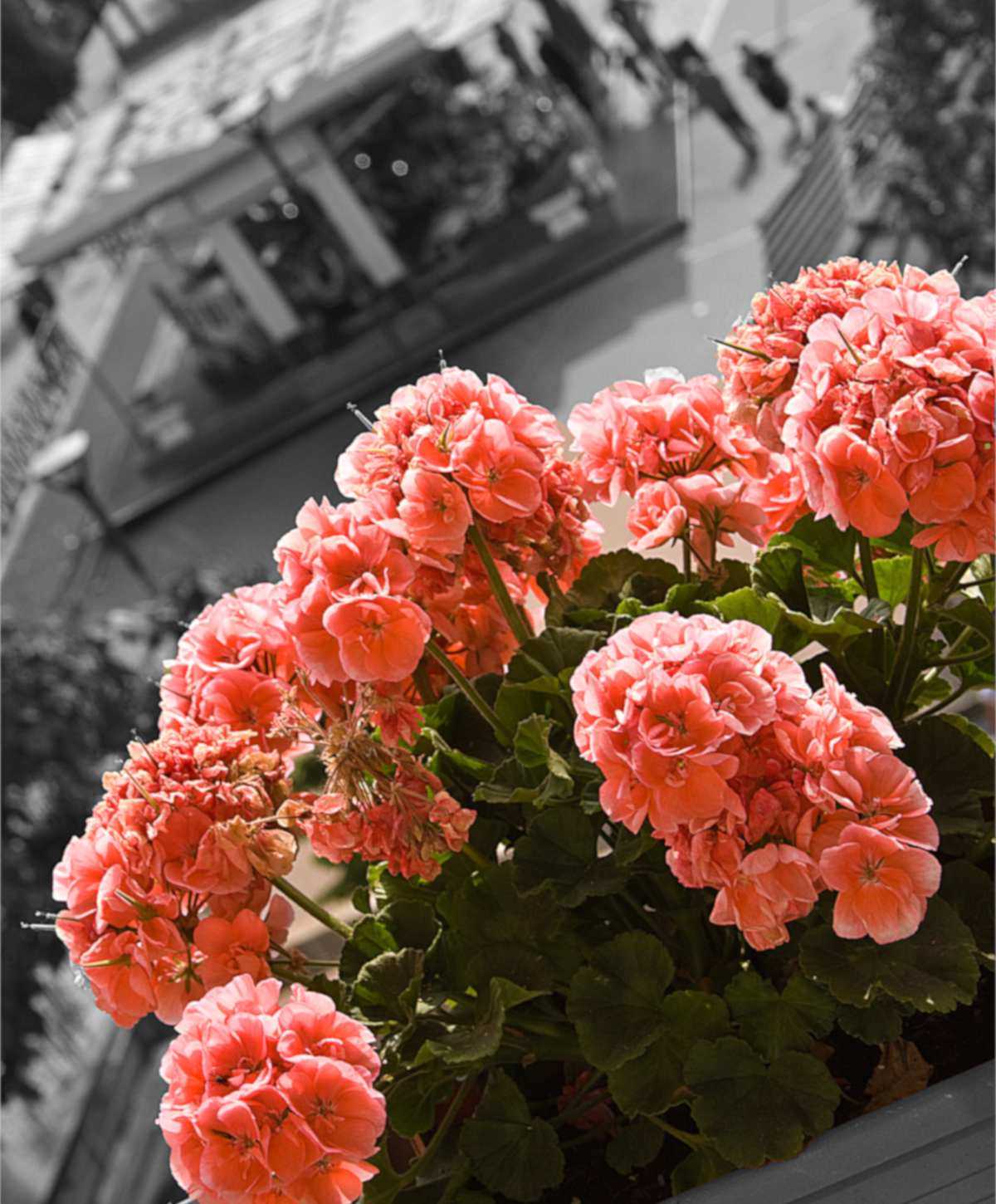
In the spring, when the risk of frost has passed, it’s time to replant your geraniums. If you stored the plants dormant, remove them from the container and gently shake off the vermiculite or peat moss. Plant them in well-draining soil in a sunny location. Water thoroughly after planting, and continue to care for your geraniums as you would during the growing season.
By following these tips, you can successfully overwinter your geraniums and enjoy their vibrant blooms year after year. With a little care and attention, your geraniums will survive the winter and come back stronger than ever in the spring.
Propagating Geraniums: How to Multiply Your Plants
Geraniums are a popular choice for home gardeners due to their beautiful blooms and easy care. However, if you want to expand your geranium collection or simply share the joy of these plants with others, propagating geraniums is a great option. This process allows you to multiply your plants and create new geraniums from existing ones. Here are some essential tips on how to propagate your geraniums.
1. Gather the Necessary Supplies
Before you begin propagating your geraniums, make sure you have all the necessary supplies on hand. These include:
- Sharp scissors or pruning shears
- Clean pots or containers
- Well-draining potting soil
- Rooting hormone (optional, but can help increase success rates)
- Watering can or spray bottle
- Plastic bags or propagation domes
2. Choose the Right Method
There are several methods you can use to propagate geraniums, including stem cuttings, division, and seed propagation. Stem cuttings are the most common and easiest method for home gardeners. This involves taking a cutting from a healthy geranium plant and encouraging it to root and grow into a new plant.
3. Take Stem Cuttings
To take stem cuttings, follow these steps:
- Select a healthy, non-flowering stem from the geranium plant. Ideally, the stem should be about 4-6 inches in length and have several leaves.
- Using sharp scissors or pruning shears, make a clean cut just below a leaf node (where the leaves attach to the stem).
- Remove any lower leaves from the cutting, leaving only a few at the top.
- Optional: Dip the cut end of the stem into rooting hormone to encourage faster root growth.
- Plant the cutting in a pot filled with well-draining potting soil.
- Water the cutting thoroughly and place it in a warm, bright location, avoiding direct sunlight.
- Cover the pot with a plastic bag or propagation dome to create a humid environment.
- Keep the soil consistently moist, but not waterlogged.
- After a few weeks, the cutting should start to develop roots and new growth.
4. Care for Your New Plants
Once your geranium cuttings have rooted and started to grow, you can transplant them into individual pots or into your garden. Be sure to provide them with proper care, including regular watering, well-draining soil, and adequate sunlight. Over time, your new plants will mature and produce beautiful blooms, giving you even more geraniums to enjoy.
5. Experiment with Other Methods
While stem cuttings are the most popular method for propagating geraniums, don’t be afraid to try other methods, such as division or seed propagation. Division involves separating mature plants into smaller sections, each with its own root system. Seed propagation involves collecting and planting geranium seeds. Experimenting with different propagation methods can help you expand your geranium collection and discover what works best for you.
Propagating geraniums is a rewarding process that allows you to create new plants and share the beauty of geraniums with others. With the right supplies and techniques, you can easily multiply your geraniums and enjoy their stunning blooms for years to come.
Q&A:
How often should I water my geraniums?
Geraniums should be watered when the top inch of soil feels dry to the touch. On average, this is usually about once a week. However, the frequency may vary depending on factors such as temperature, sunlight, and the type of potting soil used.
Can geraniums be grown indoors?
Yes, geraniums can be grown indoors. They are adapted to grow in pots and can thrive in well-lit indoor areas. It is important to provide them with adequate sunlight and regular watering to ensure healthy growth.
How do I deadhead geraniums?
To deadhead geraniums, simply pinch or cut off the faded flowers just above a leaf node or a set of leaves. This will encourage new blooms to form. Regular deadheading will help to keep the plant looking tidy and promote continuous blooming throughout the season.
Do geraniums need fertilization?
Yes, geraniums benefit from regular fertilization. Use a balanced, water-soluble fertilizer every 2-4 weeks during the growing season. Be sure to follow the package instructions for the appropriate dilution rate and apply the fertilizer to moist soil.
What are some common pest problems for geraniums?
Some common pest problems for geraniums include aphids, whiteflies, spider mites, and caterpillars. These pests can be controlled by regularly inspecting the plants, removing any affected leaves or insects by hand, and using organic insecticidal soaps or sprays when necessary.
Why are the leaves of my geranium turning yellow?
Yellowing leaves on geraniums can be a sign of overwatering, nutrient deficiency, or root rot. Check the moisture level of the soil, adjust your watering schedule if necessary, and consider adding fertilizer if the plant lacks nutrients. If the yellowing persists, it may be necessary to repot the plant in fresh soil.
Can geraniums tolerate cold temperatures?
Geraniums are not frost-tolerant and should be brought indoors or protected during cold temperatures. If the temperature drops below 45°F (7°C), it is recommended to bring the plants inside or cover them with frost cloth to prevent damage.
Video:
How to grow Geranium Flowers in Pots | From Plantation of Saplings to Full Bloom – Complete Guide







